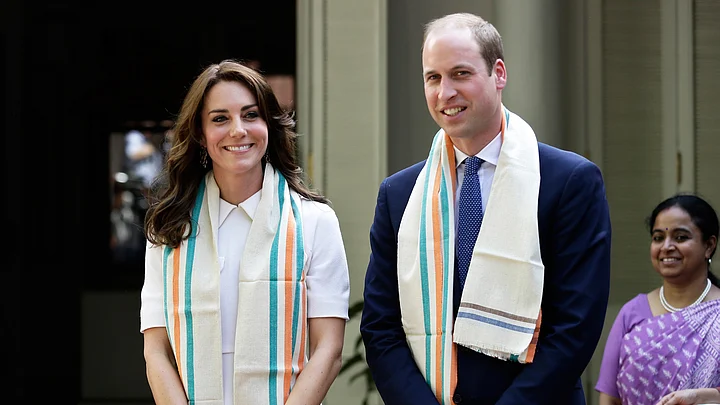A new bride told her husband that India was the first country on her wishlist of countries she’d like to visit. Five years later, her husband made her wish come true. Though commonly referred to as Will-Kat in Britain, the couple in question are not any ordinary couple, but the future King and Queen of Britain.
I was a little school girl when William’s parents, Prince Charles and Princess Diana, visited India in 1992 and I vividly recall the euphoria. India was abuzz with the arrival of the Royals. Indians were both star-struck and moved by the combination of glamour and compassion that Diana exuded.
Kolkata, I recall, gave her a euphoric welcome. People were mesmerised by her charisma – by how empathetically she reached out to the inmates of Mother’s Teresa’s Hospice in Kolkata, and how humanely and tragically she revealed the unravelling of her marriage in a set of poignant and now iconic photos – the ‘missing’ Charles’ kiss after a Polo match in Jaipur on the eve of Valentine’s Day, and posing by herself at the Taj Mahal.
Royal Couple a Little Less Royal to Us These Days
The tenor and tone of the Will-Kat visit could not be more different. For starters, their story will be narrated as a Royal Romance in India compared to the story of the Royal Estrangement that was captured on camera in 1992.
William has famously brought his wife to India to fulfil her wish of seeing the country. When they visit the Taj Mahal, unlike Diana’s solitude, their Taj photos will chronicle and cement the story of their togetherness.
This Royal visit, more tellingly, is also a metonym of all the changes India has witnessed since the Royal visit of 1992. It is revelatory of the transition seen from the end of the last century when Charles and Di visited, to twenty-first century India. It brings to the fore changes in the sensibility of Indians towards the Royal Family of their erstwhile rulers.
India has been witnessing a churn away from its anglicised inheritance to a space that is increasingly aspirational in economic hue, and right-wing in political leaning. This shift was best relayed in the outcome of the 2014 general elections in India.
India Comes Into Its Own
Today’s India has a particularistic ego of its own. Indians no longer wish to ape the West. Their businesses are looking to explore and conquer foreign waters, including those of the UK, but only when it makes shrewd business sense to them. Britain has become the wooer, courting Indian businesses.
In the twenty-first century geopolitics of capitalism, the West needs Indian businesses – a pullout of Tata Steel from the UK is being seen by Britain as a painful economic blow.
Indians, in their aspirational swagger, wish to be at par with the West but only in economic prowess. When it comes to cultural imaginings, they wish to concretise their very own.
Unsurprisingly then, twenty-first century India is less elated by a Royal visit. Indians, like many people in the UK, do not see William and Kate so much as Royalty or Ambassadors of Britain, but more as celebrities. The Royal couple have also worked to portray themselves more as regular people rather than Royalty.
A Fitting Legacy of the Royal Tour: Facing Our Disparities
The media coverage of their India visit has so far been ‘picture perfect’. But a more appreciative look at this picture perfection strikingly reveals learnings for India, especially elite India.
On day one, Their Royal Highnesses saw the ‘real’ India. They saw the juxtaposition of the obscene extremes of wealth that unsettlingly remains the very soul of India, the very brick-and-mortar on which Indian society still rests – from the suffocating bylanes of a crowded Mumbai slum, to a glamorous party stitched together by the presence of India’s glitterati from the worlds of business, entertainment and sports.
Tellingly, the two Indias that Will and Kate witnessed rarely, if ever, intersect. The jarring combination of both Indias in the span of a day ought to challenge the privileged in India to take their cue from the Royals.
Diana left a lasting impression on the people of India. Let’s hope the itinerary of William and Kate’s visit, by challenging the rigid separation of affluent India and indigent India and juxtaposing them so closely, will leave a message apt for twenty-first century Indian society – the two starkly dissimilar Indias within India must coalesce if the country is to meaningfully progress to a more equal nation.
This would be a fitting legacy of the Royal Indian tour.
(The writer is a political and economic analyst)
(At The Quint, we question everything. Play an active role in shaping our journalism by becoming a member today.)
